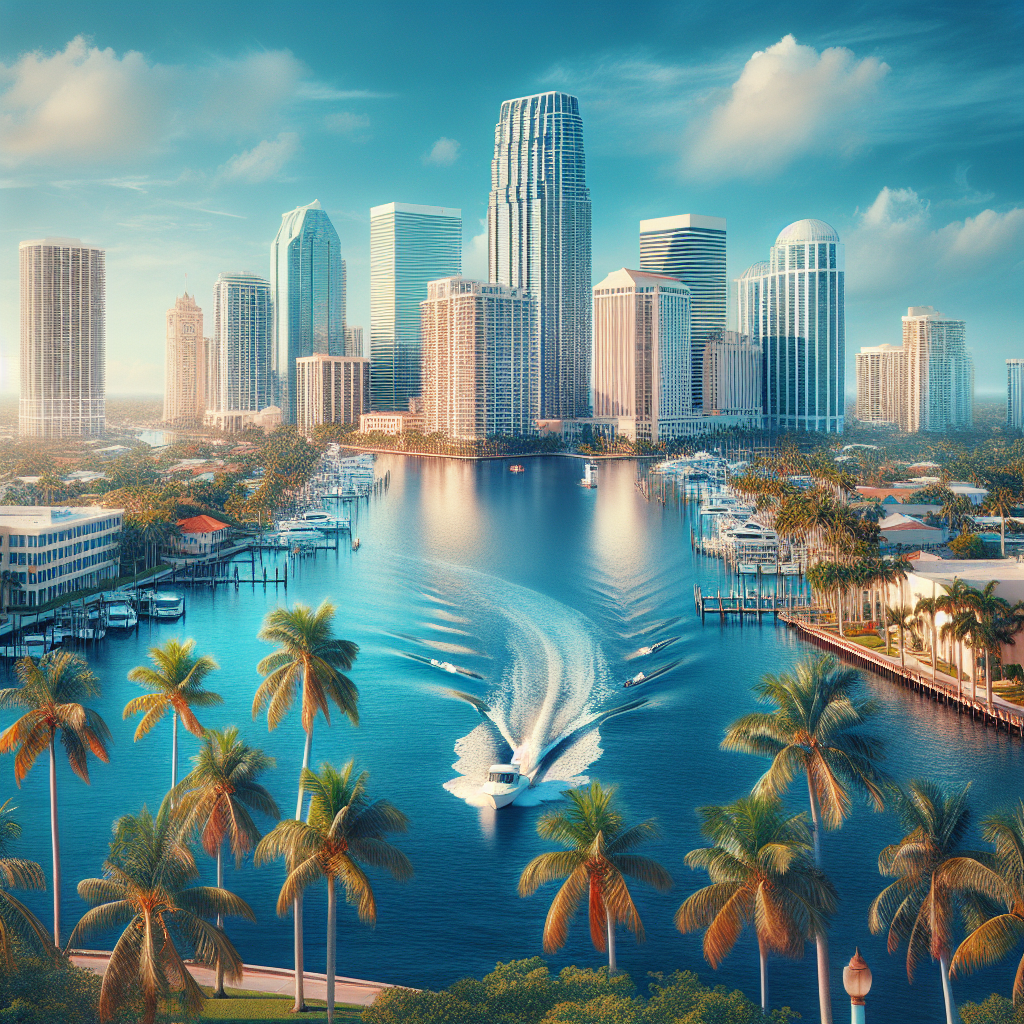West Palm Beach is a vibrant city located in Palm Beach County, Florida. Known for its stunning waterfront views, lively entertainment options, and rich cultural heritage, West Palm Beach has become a sought-after destination for both residents and tourists. But have you ever wondered, how large is West Palm Beach? This article will take you on a journey to discover the surprising size of this remarkable city.
With an area covering approximately 58.2 square miles, West Palm Beach offers a blend of urban and suburban living. The city is strategically positioned along the Atlantic coast, making it an ideal location for businesses and leisure activities alike. From the bustling downtown area to the serene residential neighborhoods, West Palm Beach has something to offer everyone.
Whether you're interested in the city's geographical dimensions, its population size, or the unique neighborhoods that make up its landscape, we've got you covered. We'll delve into various aspects of West Palm Beach, providing you with a comprehensive overview that will leave you more informed and perhaps even more intrigued by this Floridian gem.
Call 561-968-0046 or email us with any questions or if we can help you!
Geographical Size of West Palm Beach
When exploring the geographical size of West Palm Beach, it's essential to consider both its land and water areas. The city spans a total of approximately 58.2 square miles, with around 55.1 square miles being land and the remaining 3.1 square miles consisting of water. This unique combination of land and water areas contributes to the city’s diverse landscape and offers a variety of recreational activities for residents and visitors.
West Palm Beach is strategically located along the eastern coast of Florida, bordered by the Atlantic Ocean to the east and the Everglades to the west. The city's prime location not only provides stunning ocean views but also easy access to some of Florida’s most beautiful natural reserves. This geographical positioning makes West Palm Beach an attractive destination for outdoor enthusiasts and nature lovers.
The city's layout is a mix of bustling urban centers and tranquil residential areas. Downtown West Palm Beach serves as the city's commercial and cultural hub, featuring a variety of shops, restaurants, and entertainment venues. In contrast, the residential neighborhoods offer a peaceful retreat with tree-lined streets and well-maintained parks. This balance between urban and suburban environments is one of the many reasons why West Palm Beach is considered a great place to live and work.
Understanding the geographical size of West Palm Beach gives us a clearer picture of the city's layout and the diverse opportunities it offers. Whether you're interested in the vibrant downtown area or the serene suburban neighborhoods, West Palm Beach has something to cater to everyone's preferences.
Population Statistics of West Palm Beach
As of the most recent census data, West Palm Beach boasts a population of approximately 111,000 residents. This figure reflects the city's steady growth over the past few decades, driven by its appealing climate, economic opportunities, and high quality of life. The population density is around 2,000 people per square mile, which allows for a vibrant community while still maintaining a spacious and comfortable living environment.
The demographic composition of West Palm Beach is quite diverse, with residents hailing from various ethnic and cultural backgrounds. This diversity is one of the city's strengths, contributing to a rich tapestry of cultural experiences, festivals, and culinary delights. The city's population is also relatively young, with a median age of 39, making it a dynamic and energetic place to live.
In terms of household income, West Palm Beach presents a mix of economic levels. The median household income is around $54,000, reflecting a healthy economy with a range of job opportunities in sectors such as tourism, healthcare, and technology. The city is also home to a number of retirees, drawn by the pleasant climate and numerous amenities tailored to an older demographic.
Education is another key aspect of the population's profile. West Palm Beach is served by the Palm Beach County School District, one of the largest in the state, offering a variety of educational programs and institutions. Additionally, the city is in proximity to several higher education institutions, providing ample opportunities for lifelong learning and professional development.
Overall, the population statistics of West Palm Beach paint a picture of a thriving, diverse, and well-rounded community. This dynamic population contributes significantly to the city's vibrant atmosphere and continued growth, making it an exciting place to call home.
Comparing West Palm Beach to Neighboring Cities
West Palm Beach, with its unique charm and vibrant lifestyle, often draws comparisons to its neighboring cities, such as Palm Beach Gardens, Jupiter, Lake Worth, Boynton Beach, and Lantana. Each of these cities offers distinct characteristics that contribute to the rich tapestry of Palm Beach County.
Palm Beach Gardens, for instance, is renowned for its upscale shopping centers, golf courses, and lush green spaces. While smaller in population, with around 57,000 residents, it offers a more suburban feel compared to the bustling urban environment of West Palm Beach. The Gardens Mall and numerous golf courses like the PGA National Resort cater to luxury seekers and golf enthusiasts.
On the other hand, Jupiter is famous for its beautiful beaches and the iconic Jupiter Inlet Lighthouse. With a population of about 65,000, Jupiter has a more laid-back, coastal vibe. It is an ideal location for those who enjoy outdoor activities such as boating, fishing, and water sports.
Lake Worth stands out due to its eclectic arts scene and historic districts. It has a smaller population of approximately 38,000 residents but offers a vibrant cultural landscape with numerous art galleries, antique shops, and the Lake Worth Playhouse. The city's annual Street Painting Festival attracts artists and visitors from all over.
Boynton Beach, with a population of around 78,000, combines a family-friendly environment with beautiful waterfront parks. The Boynton Harbor Marina and Oceanfront Park Beach are popular destinations for both locals and tourists. The city is known for its community events and recreational activities that cater to all age groups.
Lastly, Lantana, one of the smaller neighboring towns, has a population of about 11,000. It offers a quaint, small-town charm with its waterfront parks and the Lantana Nature Preserve. The town's close-knit community and serene environment make it appealing for those seeking a quieter lifestyle.
In comparison, West Palm Beach stands out with its larger population and a more urban atmosphere. Its bustling downtown area, filled with entertainment, dining, and shopping options, coupled with its cultural institutions like the Norton Museum of Art and the Kravis Center for the Performing Arts, make it a hub of activity in Palm Beach County. While each neighboring city has its unique appeal, West Palm Beach offers a dynamic blend of urban and suburban living that attracts a diverse population.
Economic Impact of West Palm Beach's Size
The size of West Palm Beach, both in terms of land area and population, plays a significant role in shaping its economic landscape. As a city with over 110,000 residents and spanning 58.2 square miles, West Palm Beach serves as a major economic hub within Palm Beach County.
One of the key factors contributing to the economic impact of West Palm Beach's size is its diverse job market. The city is home to a wide range of industries including healthcare, finance, tourism, and technology. The presence of large employers such as Palm Beach County School District, Florida Power & Light, and various healthcare institutions provide numerous job opportunities, thereby boosting the local economy.
Moreover, West Palm Beach’s size allows for a vibrant tourism sector. With attractions like the Norton Museum of Art, the Palm Beach Zoo, and bustling Clematis Street, the city draws in millions of visitors annually. This influx of tourists supports local businesses, from hotels and restaurants to retail shops and entertainment venues, contributing significantly to the city's revenue.
The real estate market in West Palm Beach also benefits from its expansive size. The city offers a mix of residential, commercial, and industrial properties, catering to a broad spectrum of needs. The demand for real estate is further fueled by the city's attractive lifestyle, excellent amenities, and strategic location along Florida's Atlantic coast.
In addition, West Palm Beach's size accommodates a robust infrastructure that supports economic growth. The city boasts a well-developed transportation network, including major highways, a regional airport, and public transit systems, which facilitate the efficient movement of goods and people. This infrastructure is crucial for businesses operating within the city and enhances its appeal as a commercial hub.
Furthermore, the educational institutions in West Palm Beach, such as Palm Beach Atlantic University and the presence of numerous public and private schools, contribute to a skilled workforce. The availability of quality education and training programs ensures that local businesses have access to qualified professionals, fostering innovation and economic development.
Overall, the size of West Palm Beach is a fundamental aspect that drives its economic prosperity. The city's ability to support a diverse economy, attract tourists, accommodate a growing real estate market, and maintain a strong infrastructure underscores its status as a key player in the economic landscape of Palm Beach County.
Future Growth and Expansion Plans
Looking ahead, West Palm Beach is poised for significant growth and expansion. The city's leadership has laid out ambitious plans to accommodate its increasing population and enhance its infrastructure, ensuring sustained economic prosperity and an improved quality of life for its residents.
One of the primary drivers of future growth is the focus on *urban development and revitalization*. West Palm Beach is investing in revitalizing its downtown area, with new residential and commercial projects aimed at creating a vibrant, mixed-use environment. These initiatives are designed to attract new businesses, residents, and visitors, further bolstering the local economy.
Additionally, the city is prioritizing *sustainable development*. With an eye on environmental conservation, West Palm Beach is implementing green building practices and expanding its network of parks and recreational facilities. These efforts not only enhance the city's appeal but also promote a healthier and more sustainable urban environment.
The transportation infrastructure is also set to see significant enhancements. Plans are in place to improve public transit systems, expand road networks, and develop bike-friendly routes. These improvements aim to reduce traffic congestion, facilitate efficient movement, and make the city more accessible for residents and tourists alike.
Furthermore, West Palm Beach is fostering *innovation and technology*. The city is working to establish itself as a tech hub by attracting tech companies and startups. Initiatives such as the development of tech incubators and partnerships with educational institutions are geared towards creating a thriving tech ecosystem that can drive future economic growth.
Education and workforce development remain a key focus for future expansion. Investments in educational institutions and vocational training programs aim to equip the local workforce with the skills needed for emerging industries. This focus on education ensures that West Palm Beach remains competitive and continues to attract businesses looking for a skilled labor pool.
As West Palm Beach looks to the future, the integration of smart city technologies is another exciting development. Leveraging data analytics, IoT, and other advanced technologies, the city aims to enhance public services, improve infrastructure management, and provide a higher quality of life for its residents.
*In conclusion, the future growth and expansion plans for West Palm Beach are comprehensive and forward-thinking.* These initiatives are set to transform the city into a more vibrant, sustainable, and economically robust community. If you have any questions or need assistance with IT services to support your business's growth in West Palm Beach, call 561-968-0046 or email us today!







